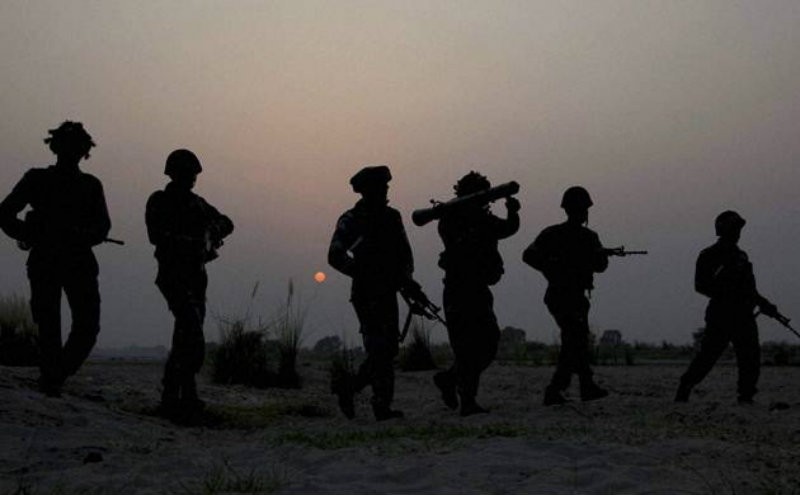

Last week Pakistan’s Society of Newspaper Publishers, APNS sent an interesting circular out to its members: it was advised that they refer to soldiers’ killed in anti-terror operations as ‘shaheed’.
Member publications were reminded that the country was in a state of war and "to pay befitting tribute to those continuing to lay down their lives in the defence of Quaid’s Pakistan, may we suggest that all fallen soldiers be referred to as ‘shaheed’ or martyrs in our newspapers and magazines."
The circular seems nicely phrased and reiterated that of course this was ‘only advice’. And it is not unreasonable for institutions and families to want to have the sacrifices of their soldiers acknowledged, but the timing of this advice is interesting. It comes at a time of escalating tensions -- not just between the Defence establishment and the Nawaz Sharif government, but also between the military establishment and sections of the media.
In this context the latest twist in the so-called ‘Dawn Leaks’ saga is also pretty interesting. On Wednesday, the General in charge of the forces’ media wing ISPR announced that he was withdrawing a tweet he had sent out regarding the government’s actions in the so-called Dawn Leaks matter.
The hoo ha about this ‘leak’ is still ongoing and the army still seems furious about a Dawn column (back in October) that was about a meeting in which the army and civilian leadership were not in agreement on the ongoing anti-terrorist operations in the country. To many people this doesn’t sound like earth-shattering news or astonishing in any way, but the military continues to insist this was a breach of national security. An enquiry committee was formed and apparently at the end of last month they produced a report, issued a notification and then a few more heads rolled.
The government’s notification was the subject of the controversial tweet: in it the ISPR General used words that many on social media found shockingly ‘disrespectful’ as he declared it ‘incomplete’ and announced "Notification is rejected".
The critics questioned: was it appropriate for the army spokesman to adopt such an insubordinate and offensive tone about the PM?
Before that there was the attempted whitewashing of notorious Taliban spokesman ‘Ehsanullah Ehsan’ who had suddenly become a good guy, beaming and looking relaxed in army custody and telling us that actually it was Indian Intel which was funding and running the terrorist TTP. His ‘confessional’ statement was aired as were ads for an ‘exclusive’ interview with him. That broadcast at least was cancelled after protests by families of victims killed in TTP attacks and action by PEMRA. An NYT piece by Mohammed Hanif summed up this bizarre situation in a piece titled ‘Pakistan’s Triangle of Hate’: "Pakistan has found a new ally in its never-ending war against India -- and he is the public face of our most ruthless killers."
Although the piece was widely shared on social media, the Express Tribune reprint of it was a blank space. This was pretty darn dramatic and must have been extremely annoying to the same people already quite angry with the print media.
But of course it’s not just the print media that is proving annoying: the whole Bol tv saga continues to roll on too… The media regulator ordered it to cease work, then a court order overturned the Pemra ruling. But there was an angry backlash -- so much so that the Pemra chairman actually held a presser saying he and his staff were receiving threats and needed protection.
Why would he or his staff be afraid? To get a sense of this you need to listen to the tape he played at the presser, what is alleged to be the recorded telephone conversation of a call made (in early May) to a Pemra official in Gujranwala by a very authoritative sounding individual.
Fauji apologists say the widely tweeted recording is fake but really I don’t know any actor who could put up that good a performance!!
The media has raised questions about exactly who the army’s anti-terror activities are targeting and it has pointed out the contradictions in a policy that whitewashes any militant who conveniently points the finger of blame at India. But in a surreal twist, those who point out such contradictions are themselves quickly branded enemies…
So no wonder that all of these events are causing people to ask: who exactly is the enemy in this anti-militancy operation known as Radd ul Fasaad? Is it the murderous (Pakistani) militants who have slaughtered civilians and beheaded soldiers? Or is it journalists and the press? Or is it the civilian government? Or is it the first daughter?
What are now being defined as enemy lines?
Best wishes,